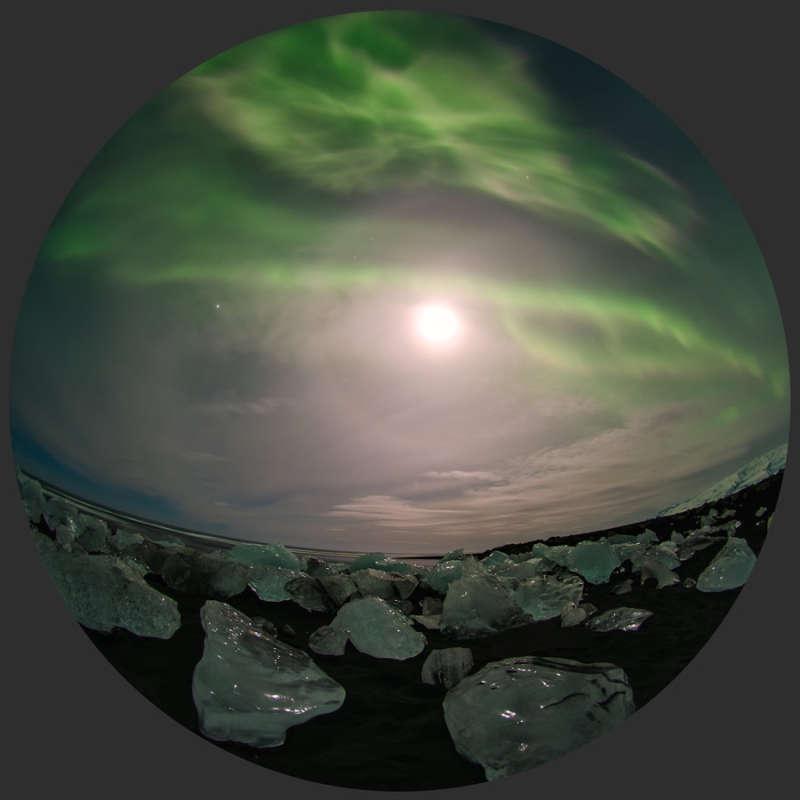
|
Credit & Copyright: Stéphane
Vetter
(Nuits sacrées)
Explanation:
Not from a snowglobe, this expansive fisheye
view of ice and sky was captured on February 1, from
Jökulsárlón Beach,
southeast Iceland, planet Earth.
Chunks of glacial ice on the black sand beach glisten in the
light of a nearly full moon surrounded by
a shining halo.
The 22 degree lunar halo itself is created by ice crystals in
high, thin clouds refracting the moonlight.
Despite the bright moonlight, curtains of aurora still
dance through the surreal scene.
In early February,
their activity was triggered by Earth's restless magnetosphere
and the energetic wind from a
coronal hole
near the Sun's south pole.
Bright Jupiter, also near opposition, is visible at the
left, beyond the icy lunar halo.
|
January February March April May June July August September October November December |
| ||||||||||||||||||||||||||||||||||||||||||||||||
NASA Web Site Statements, Warnings, and Disclaimers
NASA Official: Jay Norris. Specific rights apply.
A service of: LHEA at NASA / GSFC
& Michigan Tech. U.
Based on Astronomy Picture
Of the Day
Publications with keywords: aurora - iceland
Publications with words: aurora - iceland
See also:
- APOD: 2025 January 7 Á A New Years Aurora and SAR Arc
- APOD: 2024 December 8 Á Aurora around Saturns North Pole
- APOD: 2024 October 16 Á Colorful Aurora over New Zealand
- APOD: 2024 October 13 Á Aurora Timelapse Over Italian Alps
- Northern Lights, West Virginia
- Aurora Australis and the International Space Station
- APOD: 2024 June 26 Á Timelapse: Aurora, SAR, and the Milky Way
